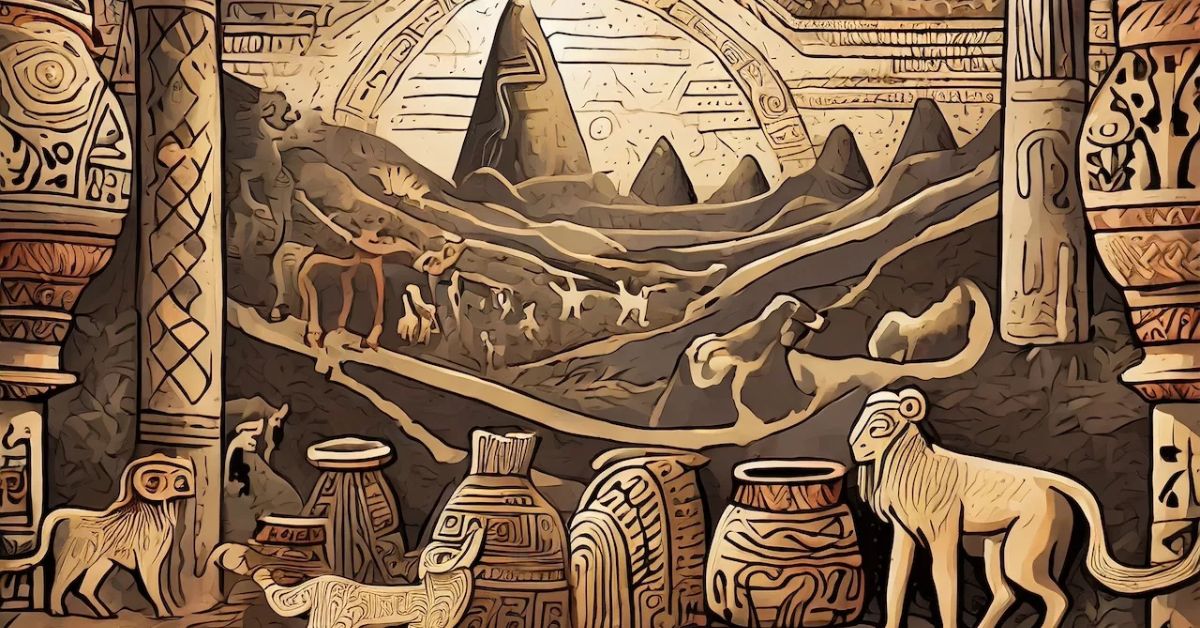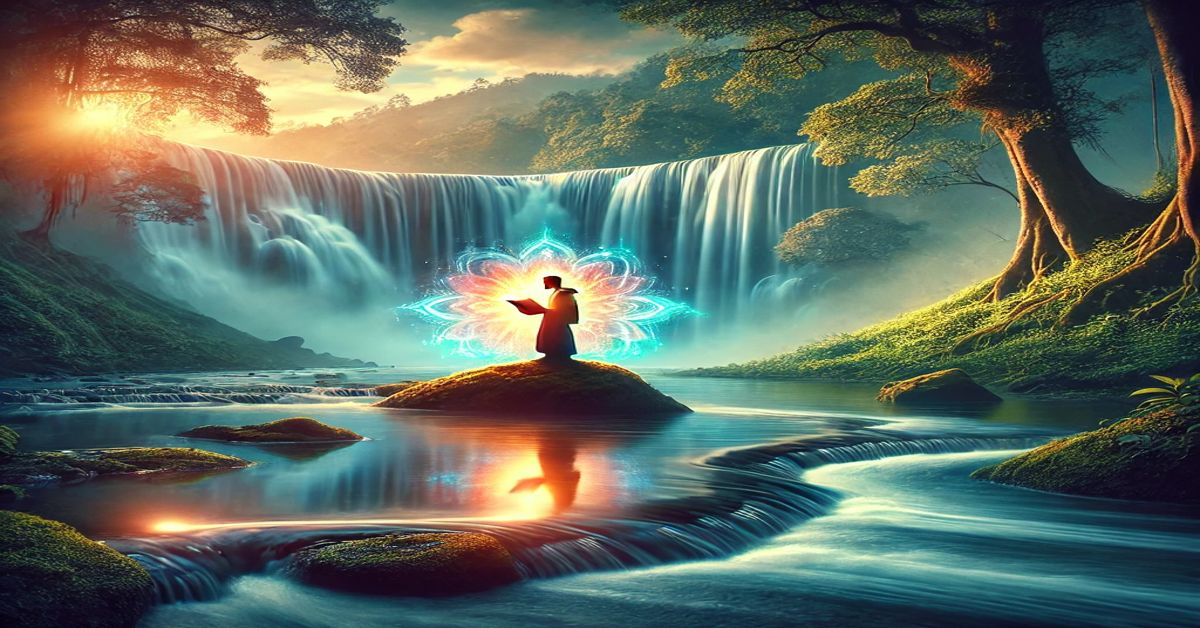Art helps us understand the past. It works like a time capsule, keeping the feelings, ideas, and cultures of people from long ago. Through art, we can see what mattered to them. Ancient art, in particular, gives us a deep look into how those people lived and what they believed in.
Ancient art continues to captivate modern audiences for its sophistication, symbolism, and mystery. But have you ever wondered what made these masterpieces so enduring? This blog will guide you through the history, styles, and legacy of ancient art, offering a closer look at how it shaped the world we know today. Whether it’s the mesmerizing frescoes of ancient Greece or the intricately carved sculptures of India, prepare to be transported to a world where every stroke, chisel, and mosaic told a story that lives on centuries later.
What Is Ancient Art?
Long before the brush touched canvas or the loom wove vivid tapestries, ancient art was created to document the human experience, praise deities, and convey political power. Unlike modern art, where self-expression or aesthetics take center stage, ancient artwork was often deeply functional. Yet, in their practicality lies a beauty that withstands the wear of time.
Ancient art ranges from early cave paintings dating back tens of thousands of years to the architectural wonders that adorned ancient civilizations like Egypt, Mesopotamia, Greece, and beyond. These works include sculptures, pottery, carvings, murals, and mosaics. Each type carries a story—not only of its subjects or creators but of the society that called it into being.
To witness ancient art is to glimpse a world where craftsmanship was sacred, and where the visual language carried the power to connect humanity across oceans, continents, and epochs.
The Role of Ancient Art in Society
Ancient art was not created for art’s sake. It served a purpose celebrated in every aspect of life, from religion to governance. These societies transformed stone, clay, metal, and pigment into tangible emotions and eternal messages.
1. Religious Worship and Spirituality
Religion was the lifeblood of many ancient civilizations, and much of their art reflected this devotion. Temples and altars were adorned with depictions of gods, goddesses, and spiritual motifs. Consider the resplendent frescoes of Egyptian tombs, designed to guide souls to the afterlife. Meanwhile, the intricate carvings upon Angkor Wat in Cambodia tell stories of Hindu cosmology.
Art in these cases wasn’t just decorative; it was deeply symbolic. The materials, forms, and colors were chosen with painstaking care to resonate with the divine.
2. Expressions of Power
What better way to assert power than to build a monument that scrapes the heavens or commission a lifelike statue that immortalizes a ruler? From the pyramids of Giza to the colossal statues of the Olmec civilization, art became a form of propaganda—a means of projecting power that couldn’t be questioned.
Through these larger-than-life creations, rulers could etch their legacies into eternity, ensuring their names echoed through time.
3. Preserving Daily Life
It is easy to look at ancient art and marvel at its grandeur, but some of the most touching works depict everyday existence. On Greek pottery, for instance, you’ll find athletes mid-motion and market scenes buzzing with life. Similarly, murals from ancient Pompeii provide a window into Roman dining, fashion, and festivities. These glimpses into ordinary life remind us that art has always been driven by the human desire to capture fleeting moments and immortalize them.
Styles of Ancient Art
Each civilization imbued its artworks with individuality and meaning. While it’s impossible to encapsulate the diversity of ancient art in one guide, the following civilizations left particularly profound marks on the artistic world.
Ancient Egyptian Art
Steeped in mythology, Egyptian art is instantly recognizable for its grandeur and symbolism. Perfectly proportioned pharaoh statues, vivid tomb murals, and hieroglyphic carvings display a balance between precision and storytelling. The Great Sphinx, with its commanding presence, stands as a testament to the Egyptian mastery of sculpture.
Greek and Roman Art
The Greco-Roman world embraced realism and idealism, shaping much of Western conceptions of beauty. Greek marble statues like the Venus de Milo exude grace, while Roman mosaics depict myths and history with intricate detail. These works are as much about intellectual pursuits as they are about technical skill, reflecting societies deeply invested in philosophy and the arts.
Mesopotamian Art
Known as the cradle of civilization, Mesopotamia gifted us with the ziggurats, towering step-pyramids that bridged earth and heaven. Intricate reliefs, like those in the palace of Ashurbanipal, showcase epic hunts and battles, while the Code of Hammurabi, engraved on basalt, stands as one of the earliest legal documents in history.
Indian and East Asian Art
From the Buddhist sculptures of Gandhara to the colorful ukiyo-e prints of Japan, Asian art is as diverse as its vast landscapes. Indian temple carvings brim with life, movement, and religious tales, while Chinese brush paintings evoke harmonious worlds where humanity and nature intertwine.
Why Ancient Art Still Captivates Us
Why does ancient art resonate so deeply in our modern era of digital images and instant communication? Perhaps because it reminds us of our shared humanity and how creativity, curiosity, and emotional expression transcend time.
Craftsmanship Beyond Compare
The detail and effort that went into ancient creations cannot be overlooked. These artists worked without modern tools, yet their expertise rivaled—and often exceeded—the capabilities of today’s technology.
The Mystery of Ancient Worlds
When you look upon a statue from ancient Greece or an Egyptian sarcophagus, you’re left wondering about the lives behind these works. What dreams, fears, and joys inspired such creations? This intrigue draws us closer, sparking imagination and study.
A Testament to Resilience
Ancient artworks often endured wars, natural disasters, and centuries of decay. Their survival is a testament to the durability of human expression and the importance our ancestors placed upon leaving their mark.
Exploring Ancient Art in the Modern Day
Thanks to modern technology and archaeology, ancient art is now more accessible than ever. Virtual museum tours, 3D renderings of artifacts, and studies of excavation sites allow us to explore these masterpieces without leaving home. Still, nothing compares to standing before a piece of ancient art in person—be it the grandeur of the Parthenon or the delicate brushstrokes on a Tang Dynasty vase.
To truly appreciate ancient art, consider exploring it through multiple lenses. Attend workshops, watch documentaries, and engage with experts who study these works passionately. Examining art isn’t just about seeing; it’s about feeling the connection to those who came before us.
Discover the Legacy of Ancient Art
Ancient art continues to inspire, provoke, and unite. Its pigments may fade, and its carvings may wear, but its power remains undiminished. By studying this art, we honor the ingenuity of our ancestors and gain perspective about our own place in the continuum of human expression.
Feeling inspired? Discover modern takes on ancient techniques, or learn how to incorporate the timeless beauty of ancient art into your creative projects. Start by exploring resources from your nearest museum or gallery—you might just uncover a piece of history that speaks to you.


















Leave a Reply
You must be logged in to post a comment.